If you visit Distrowatch regularly, you will notice that the popularity ranking barely changes from one year to another.
There are Linux distributions that will always make it to the top ten, whereas others may be on the list today and not at the end of next year.
Another not so well-known feature of Distrowatch is a waiting list that consists of distributions:
- Not reviewed yet
- With missing or faulty components
- Without solid English documentation
- Projects that do not seem to be maintained anymore
Some of the distributions that have not been reviewed yet may be worthy of consideration due to their great potential. Keep in mind that they may never make it to the front page ranking due to lack of time or Distrowatch resources to review them.
For that reason, we will share a list of what we consider the 10 most promising new distros for 2020 and a brief review of each of them.
Since the Linux ecosystem is a live being, you can expect this article to be updated from time to time, or perhaps be radically different next year.
That said, let’s take a look!
1. Condres OS
Condres OS is a modern Arch-based high-performance Linux distribution aimed at today’s cloud computing enthusiasts. It was built to have a beautiful and intuitive UI which makes it easy to use and all of its functions to be easily accessible.
It is also security conscious as it ships with Suricata, a high-performance network IDS, IPS, and network security monitoring engine for intrusion detection.
Condres OS is available in many DE versions including Cinnamon, Gnome, KDE, Xfce, etc. and also available for both 32- and 64-bit architectures.
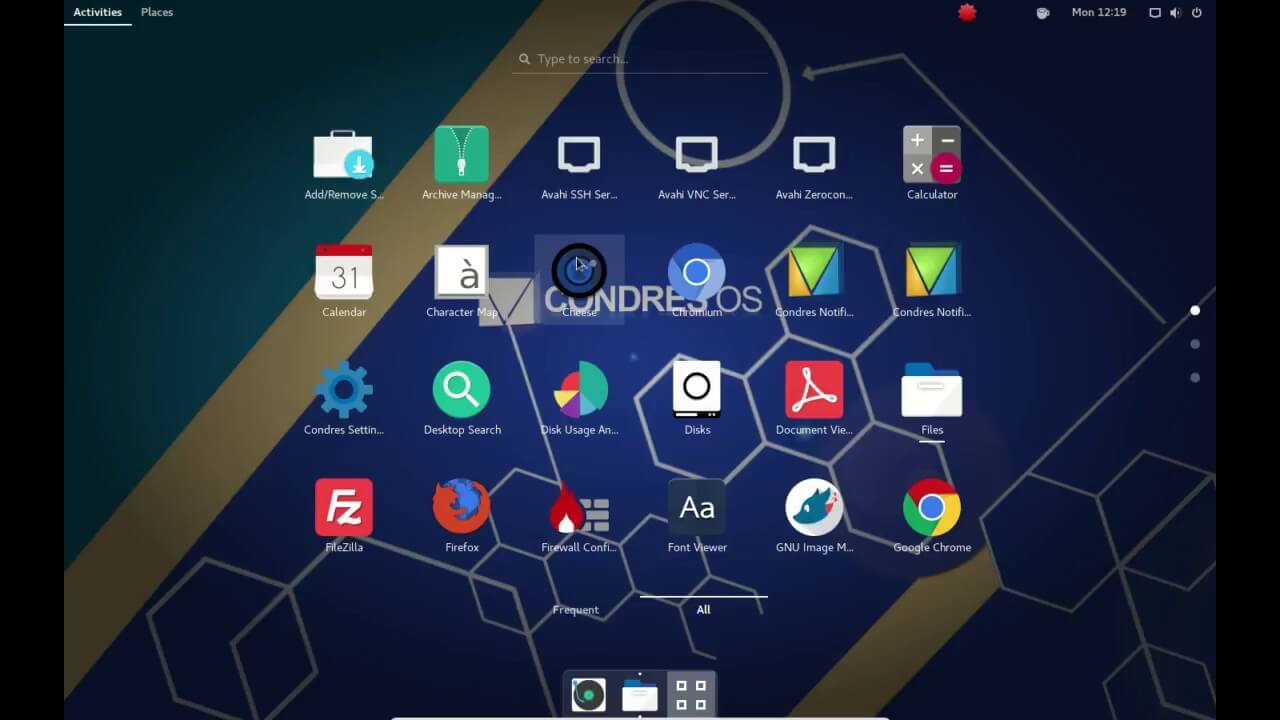
2. ArcoLinux
ArcoLinux (formerly called ArchMerge) is a full-featured Arch-based Linux distro that grants users the means to build custom distributions while also helping to improve several community editions that ship with their own desktops.
ArcoLinux has Xfce as its default DE and although it is minimalist in nature, it includes scripts via which power users can install any desktop and/or application they want.
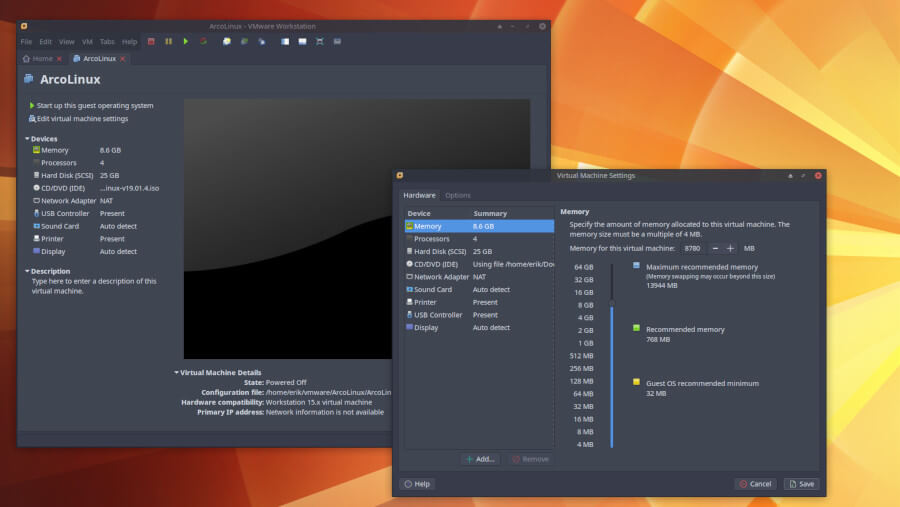
3. SparkyLinux
If you enjoy working with fast, lightweight distros then this one will fill your eyes with sparks of light.
SparkyLinux is a blazing fast lightweight Debian-based distro designed for new computers but with old computers in mind. It features various customized LXDE and Enlightenment desktops which ship with a selection of applications for home users.
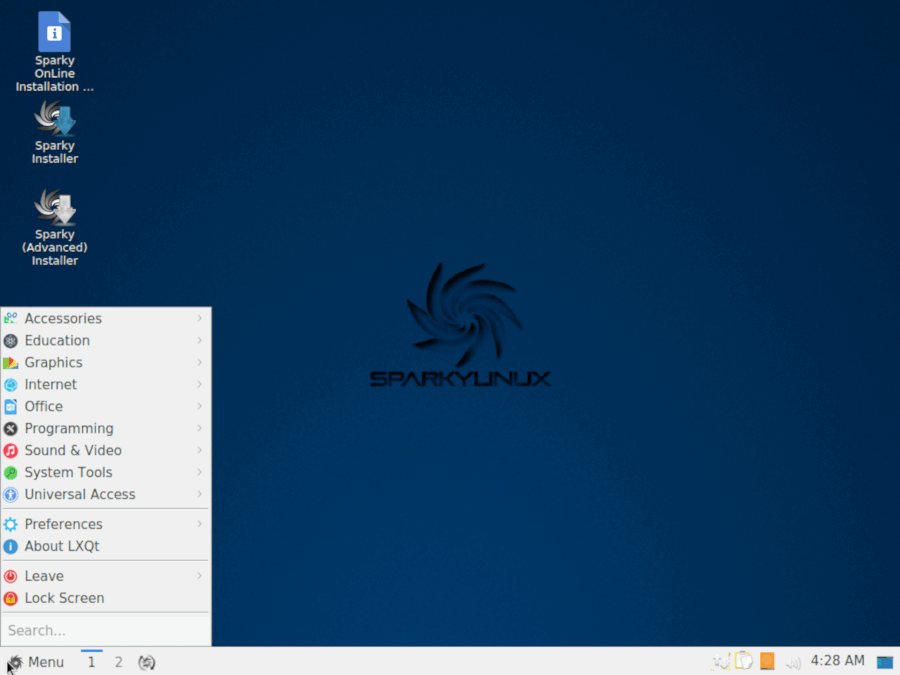
4. Flatcar Linux
Flatcar Linux is an immutable Linux distribution specifically built for containers. It is based on CoreOS’s container Linux but is built from source and thus, is independent of the CoreOS’s Container Linux project.
Flatcar Linux is designed to simplify management in large clusters which makes it ideal for running Kubernetes and it is currently funded and engineered by Kinvolk.

5. NuTyX
NuTyX is a Linux From Scratch documentation LFS and Behind Linux From Scratch documentation BLFS-inspired distro built for intermediate and advanced Linux users, and those interested in committing themselves to improve their Linux system skills.
It was developed to be highly flexible thanks to its custom package manager, cards, which enables users to compile source packages from ports, install individual binary packages, and also install groups of related binary packages like in the case of DEs like Xfce or KDE.
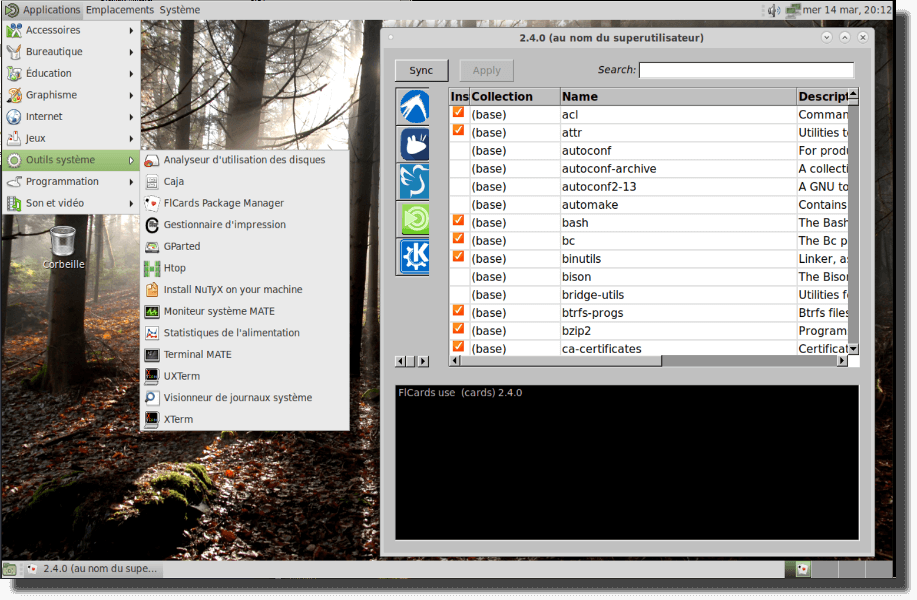
6. Robolinux
Robolinux is a distro built to provide users with a free secure Linux distribution that increases productivity and saves time.
It has a one-click Windows feature which allows you to run Windows apps somewhat natively (thanks to its VM feature). Robolinux is also keen on security and ensures that users who run Robolinux alone or together with Windows XP, 7, and 10 don’t ever have to worry about viruses, a learning curve, or performance issues.

7. Archman
Archman is an Arch-based Linux distro created in Turkey to be simple to use and customizable. It was also built the bring the awesomeness of Arch Linux to users who might be reluctant to try Arch Linux itself.
It uses the Clamares system installer and the Octopi package manager.
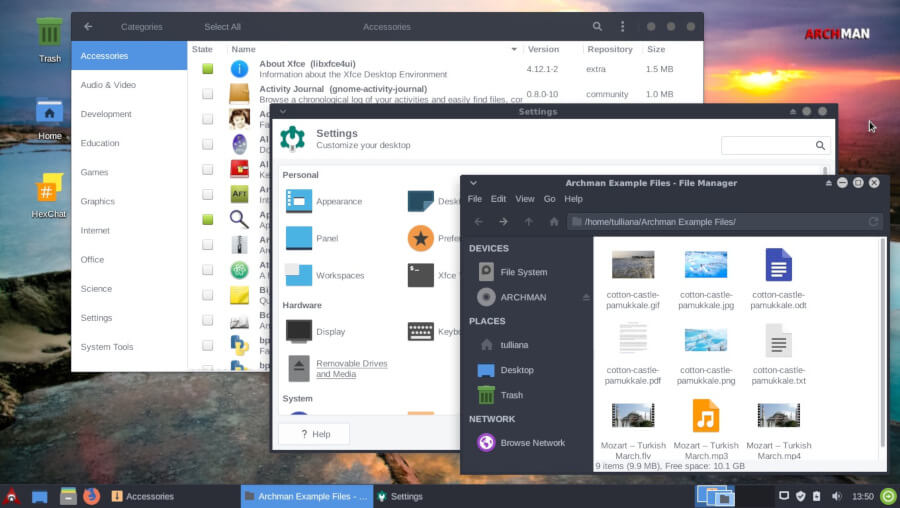
8. Void
Void is a multipurpose Operating System built from scratch based on the monolithic Linux kernel to house a hybrid binary/source package management system and a unique implementation of various processes.
This gives its users the ability to manage software as well as to build software directly from their source. It has support for Raspberry Pi single-board computers and being a rolling release, it is always up to date.
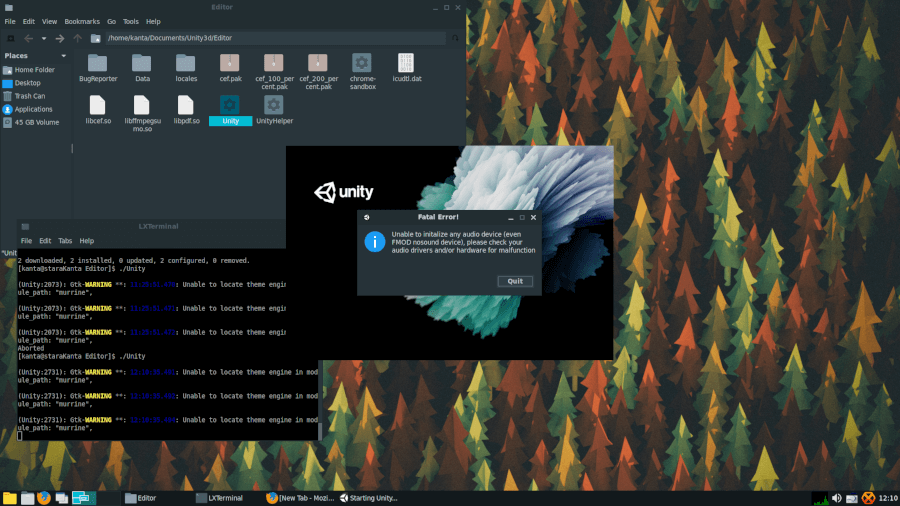
9. Modicia OS
Modicia OS is an Ubuntu LTS and Debian-based Linux OS developed by MODICIA Development Company for their public bodies and professional clients.
It boasts of 10% swappiness, program speed increase by 25%, and 20% RAM efficiency thanks to its active Turbo Boost processors. It also comes with Wine HQ pre-configured alongside the typically bundled apps, preinstalled dictionaries with multi-language support, etc.
Modicia OS is regularly updated and is available in 3 flavors, Desktop Ultimate, Light, and Didattico.
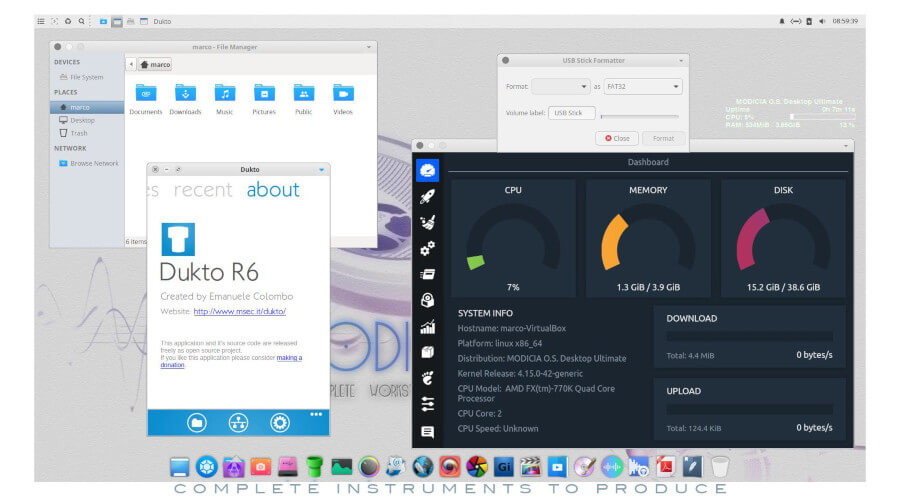
10. Bliss OS
Bliss is an open-source Android-based Operating System that aims to be usable across various platforms. It has Bliss ROM for Android devices, Bliss OS for PCs, and ROM & OS Development for business and educational institutions.
Bliss OS is free and compatible with PCs, MacBooks, and Chromebooks with support for both BIOS/CSM and UEFI boot.
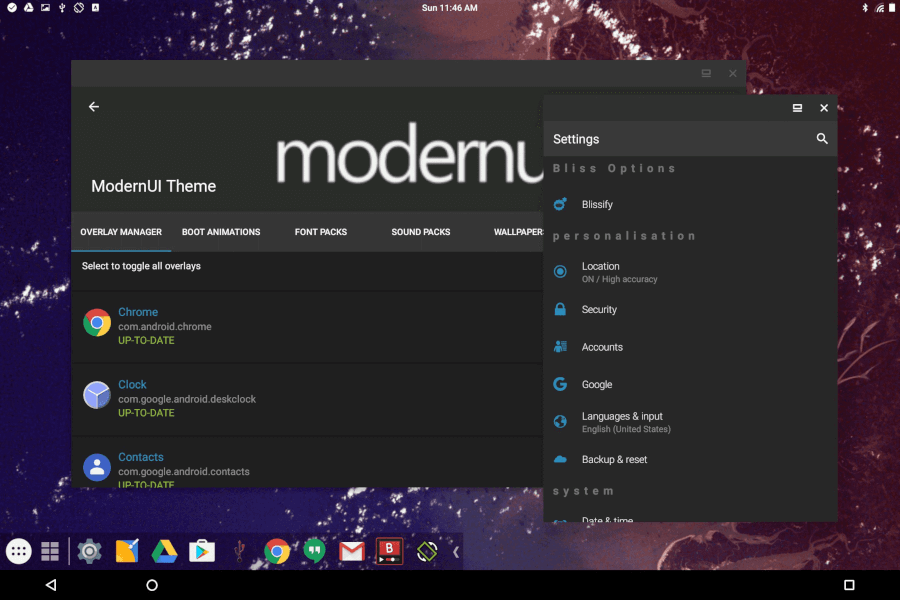
Summary
Most of these distros have been submitted for review on the waiting list and you can click the Recommend button next to the name of the distribution(s) that you like. That way, you will be contributing towards Distrowatch assigning a resource to review it.
SparkyLinux and RoboLinux are on this list because of the major changes they got last year. They are older than 2 years but they also boast updates that make me consider them to be new.
As always, feel free to let us know if you have any questions or suggestions about this article. Use the comment form below to drop us a note anytime. We look forward to hearing from you!

Hello, I think you missed a Linux Distro “Makulu Linux” is awesome. It has 4 different isos to choose from Lindos, Flash, Swift, and my favorite Core. They all are very unique and offer their own spin on what axLinux Distro should look and feel like. Makulu comes into distro flavors like Ubntu and Debian.
I think you should try it…
“A Whole of Possibilities” – I’ll see about that. Thanks for the mention, Glynn.
I tried manjaro linux a few months back. Its not a bad OS. Arch itself is the lastest of software in linux which can be unstable.
In my experience when after syncing the repositories I had update issues which broke the system. I see this question all the time. The worse part for new users is the treatment you will get from the support forum. After one of my posts was answered with a question and attitude. Which was not necessary my last post to that forum told them where to stick it. So new users be warned getting help from that forum is not very likely.
A more humble and warm support forum is either ubuntu or linux mint. At least they know how to help new users. I was so glad I was testing manjaro and not wanting to use it.
Yes, you’re right that support forums can be rude to newbies. However, consider what question(s) you are asking. If it is a simple question that has been asked thousands of times before and can be answered by reading through the FAQs, then the forum members tend to get a bit testy. Chances are that the problem you are having somebody else already had and posted the solution. So do your research before asking questions.
The Manjaro forum must be smoker’s paradise. Every smoker you challenge knows someone who is over 90 and smoked all his life. The Manjaro forum is full of users with years old error free installations but I’ve never know one last for more than a few months before breaking. IMO EndeavourOS is probably the best of the Arch based rollers.
I have run into something 180 degrees opposite from you. I have been using PCLinuxOS at least for 5-6 years. In that time, I’ve had glitches but no show-stopping problems. I wish to ppoint out that this has been MY experience and is in no way a definitive statement on the usability of PCLOS. Most comments I encounter on non-PCLOS affiliated forums are from users for whom PCLOS is a non-starter because of various serious problems.
Hi, I spent 33 hours trying to install arch on a 4-year-old Toshiba laptop. It was a nightmare. I followed all of the tutorials online as well. Then I find out most of their packages are incompatible with GRUB. I tried UEFI and legacy numerable times. The networking would not load or just quit, or I would go through the process seemingly flawlessly to find that upon rebooting, it brought me to the bad grub screen. There was literally nothing I could do.
A fellow IT guy bet me 20 bucks he could do it. I bet him and bought us a case of beer. The whole arch installation is a mess. There is nothing fun about what I went through. I had an arch installed on an old dell 5 years ago, and it was awesome!
The installation took maybe 45 minutes. That distro is on the way out for good. The developers just hate it, like you can taste the hate in bad food, you can taste the hate in this arch distro. NEVER again. I have had over 50 different distros on this machine. it never has an issue until this latest arch. they should be ashamed.
Install Gentoo Linux.
Distrowatch are a group of charlatans. They are cooking the numbers. There is too much deceit in the distrowatch site. Do not take them seriously.
In truth many of the best distros are either towards the bottom of this list or not on it at all eg: ROSA, Neptune, Sabayon, Calculate & BigLiux.
You don’t post links to the distros, it’s a good idea right?
People who take their online security seriously usually like to find their own links rather than risk redirects to bad sites and yes there are some of these relative to Linux. Google and the WOT browser add-on are your friends. :)
“ROSA, Neptune, Sabayon, Calculate & BigLiux“.
If they were the “best“, they’d be at the top of the list. :-)
“Best distro” is an arbitrary designation based on one person’s opinion of what works for them, what they like and what they are used to. Tecmint has settled on Ubuntu, Fedora and CentOS as the “best” and they are pushing those distros hard.
I tried the five distros you mention and found to be ho-hum. My favorite distros were/are Mepis and PCLinuxOS but I would never be arrogant enough to claim my favorites are the best and/or other distros stink. All distros have both good and bad features. All of them have their fans and detractors.
As a website and Linux systems admin I’m seriously impressed because there’s no way I could properly evaluate 5 distros in the time between my comment and your reply. Just in case I missed something though it would be of benefit to others if you could list all the “ho-hum” issues with the 5 distros you fully installed including the hardware details they were tested on.
I use a variety of hardware for testing which IMO is a reasonable cross section. These are: Toshiba desktop i5, 3Green Intel Celeron, Dell OptiPlex i3, LG AIO i5, LG AIO N4100, Toshiba Portege i5, LG gram i5, Samsung RV-415 AMD E450 (probably the worst processor ever made LOL).
Of my original 5 I’d probably remove ROSA from that since development of the needed upgrade has stalled. Like many companies around the world Rosalab are struggling with the economic effects of Covid-19 and development of the 2019 ISO has now moved to an ‘unofficial build’ via their forum. The last updated release for the 2016 base is not that old but given the circumstances I can appreciate why folks might not want to use it.
Linux distros are not bathroom cleansers that can be rigorously tested against each other according to a set of standardized parameters. Distros are evaluated according to arbitrary user reactions to various features.
Some users swear by ‘systemd‘, others swear at it, just to give you an example. Therefore, my opinion of ‘ho-hum‘ is as valid as your opinion of ‘best‘. I may not be a sysadmin but I have been using Linux since the days it came on diskettes.
I have tried the five distros in question as their latest versions were released. Right now I cannot recall my exact issues with those distros but the bottom line is that they did not impress me enough to start using any of them regularly.
Really? Any specific reasons why you think their numbers are made up? Or do you think they allow paid promotions and that’s a bad thing?
I often go through its lists to discover distros and I’ve always assumed the “hits” count is legit. Also, it usually has a succint overview of the listed distros with one or two relevant links.
No, I’m not saying they are made up but it’s real easy to click links multiple times to achieve a higher placing. Even without that though this list gives the appearance of being a rating as in best-to-worst which it is not.
DistroWatch has been around for longer than hundreds of distros and has been a consistent contributor to the open source community both financially and through media. While its content may not be 100% factual (I doubt that any such collection of work is), it is more reliable than not.
Every listicle “gives the appearance of being a rating” even when the author states that’s not the case. On this note, I rest my case.
Maybe I should have been more clear regarding my original statement.
If you check out the metrics for distroWatch you can see that 33% of their visitors arrive via searches and the majority of those from Google.
https://www.alexa.com/siteinfo/distrowatch.com
These first time visitors will not spend time trying to work out how the site was constructed. Instead they will see a list and assume it relates in some way to quality and/or popularity. And I’ll rest my case since someone else here has stated these rankings relate to ‘downloads’ which is totally false.
In short it does provide useful information but the presentation of it is misleading except for those who have bothered to analyze the data.
There is also a need for DistroWatch to complete some house keeping. If you check their waiting list for instance (promoted in this article) under the ‘Projects not yet ready’ section the first entry is over 10 years old and results in a not surprisingly dead link. The fifth entry is also ancient (8 years) yet the distro it is based on was only released a couple of months ago. IMO if you want people to take the data you present seriously it needs to be either deleted or updated in less than a 10 year cycle.
See my response to Julian about the DW “rankings”.
If you read the description of the ‘Projects not yet ready’ section, it explicitly states that the projects have to address some serious problems before DW takes ANY action on them. If you, or anybody else, decides to delve into those projects, you do so entirely on your own. I would say that 99.9% of DW readers never delve into that section. AFAIAC, trying distros in the the ‘Projects’ and/or ‘Waiting List’ is like trying Unstable or Experimental versions of established distros. You do so on your own and at your risk.
Have you ever written to Ladislas or Jesse about this? I have, a couple of times, and all I got is a deafening silence. I’m sure they would very much appreciate your help in cleaning out the deadwood not only in ‘Projects not yet ready’ as well as the ‘Waiting List’.
“IMO if you want people to take the data you present seriously it needs to be either deleted or updated in less than a 10 year cycle.”
Maybe that just proves how serious (not very) DW is about their Page Hit Rankings. IMO, too many people are trying to make too much of the PHR.
It is you who should not be taken seriously. Even a casual visitor to DistroWatch knows that time and time again, the writers at DW have explicitly stated that the “rankings” are not to be taken seriously.
All the “rankings” indicate is how many times each distro has been downloaded. There is no deceit, nobody is “cooking the numbers“, nobody at DW has any stake in which distro has the highest number of downloads. Several times they have thought of discontinuing the “rankings” but each time they decide to keep them just for laughs.
However, having said that, users DO test, use and review the distros residing on both the DW Active List and the Waiting List. Each distro reviewed is given a 1-10 rating. You can see those rating when you check out each, individual distro.
This is my whole point from someone who you say should not be taken seriously.
This ranking list has nothing to do with “how many times each distro has been downloaded”. It is just a record of how many times each distro’s page link has been clicked hence the title “Page Hit Ranking” at the top of it.
So, I’ll go back to my original statement that in general folks think this is some sort of quality ranking as even you don’t know how it’s presented. The only thing that changes is/are the positions based on a time scale if the list filter is applied. And the so-called review ratings are as reliable as the Chinese product ratings on Amazon.
It is just a record of how many times each distro’s page link has been clicked” Quite right. My bad. But this makes the idea that those numbers represent any meaningful ranking even more tenuous.
“Instead they will see a list and assume”
We all know what the word “assume” parses to. As a web site admin can/must you be responsible for any and all of the visitors’ assumptions?
“And the so-called review ratings are as reliable as the Chinese product ratings on Amazon.”
Which is precisely my point. Why would anyone trust one site’s opinion of a distro more than another site’s.
You are right to a point and yes opinions vary but they are just that unless you provide some specific detail.
Reviews also vary and this has been one of my gripes for some time. Many of the ‘best of’ articles in other places contain little more than the descriptions from the distro’s own site and you can tell the authors have never physically used any of them and are probably writing using Windows.
On the other hand dedoimedo.com produces technical reviews of excellent quality but most of the issues uncovered will never be encountered by an average home user. I find LinuxInsider to be one of the best review resources and maybe others will find something useful there.
https://linuxinsider.com/story/neptune-5-a-practically-perfect-plasma-based-distro-85215.html
https://linuxinsider.com/story/rosa-is-a-real-powerhouse-83087.html
https://linuxinsider.com/story/rosa-lxqt-editions-flexibility-sets-it-apart-84613.html
https://linuxinsider.com/story/calculate-linux-provides-consistency-by-design-81242.html
You are somehow related to the DistroWatch business. Right?
Something else I discovered recently that maybe explains why KDE neon is so high up their special list. These are incidents of duplicated ‘reviews’. Makes the whole thing look like a joke or the ‘Top Ten Reviews’ site equivalent of the Linux world.
https://distrowatch.com/table.php?distribution=kdeneon
Runs insanely well. Very smooth, on a very stable base to go along with it….
10th September, 9th September, 18th August, 16th July, 14th July, 13th July, 17th June
I reviewed Neon sometime earlier….
25th August, 18th August
Very stable KDE distro and the best out of the box it’s not overloaded…
9th September, 21st August, 18th August, 4th February
KDE Neon is everything I want in a distro….
15th August, 12th August, 11th August, 9th August, 8th August, 30th July, 2nd April
This is a great Linux distro for an older quad-core….
10th August, 26th July, 15th July, 21st March
This is the best distro for Plasma that I have found….
5th August, 24th July, 21st June
Very good distro. Little memory use….
18th July, 11th June
KDE neon is amazing. Best distro of all time!…
16th April, 7th March
The ultimate KDE Distro….
2nd March, 29th February
ArcoLinux is my new favorite distribution. I’ve been using it since it was ArchMerge and as a teaching distribution, it’s awesome. I’ve learned so much about GNU/Linux configuration from it. Besides that, it comes with scripts that make it easy to set up whichever desktop environment you want. Despite having a small core team, updates seem to be relatively frequent. Give it a try.
I would like to have a small efficient distro with Wayland and Enlightenment. I am not integrated in X11 distros.
Archman is shinning star. Highly recommended. Very stable,fast even old hardware.Has lots of community versions but I suggest you Xfce.
Condres looked promising so I installed the KDE version on two machines. Both had next to no additional software installed yet both suddenly stopped booting after two weeks within days of each other.
Likely an update issue but I couldn’t be bothered to find out why. Looks like yet another dev trying to manage too many DE choices instead of concentrating Q&A into one direction.
Updates that break the system. Wouldn’t be the first time but it is never cool.
Which distro do you run normally?
I’m a huge KDE fan although it’s taken me some time to accept the move from KDE4 to Plasma 5. If anyone else feels the same ROSA and MX-16 (KDE added version) still support KDE4 in addition to CentOS although MX is a community spin.
That said we can’t live in the past for ever even if Superkaramba is a big loss :). Now I run Neptune and KDE Neon. I really like the look of Nitrux but can’t be bothered with egocentric stuff that reinvents the wheel for no good reason. KDE resource use now makes it irrelevant to choose another DE unless you prefer say Xfce or Deepin for another reason.
“That said we can’t live in the past forever”
That statement implies that all changes made are for the better. From my experience, many changes seem to be made just for the sake of change or to inflict on the world some developer’s egotistical view of what Linux should look/work like.
I’ve been a KDE user since version 3.x. Sure, as KDE went from version 3 to 4 to 5, there were many eye candy and glitz changes made. People say that KDE now looks prettier, more “modern” (whatever “modern” means). That depends on what you like.
As you say, there was some functionality lost between KDE 4 and KDE 5 as there was between KDE 3 and KDE 4. If you found the removed functions useful or even necessary, is wanting them back “living in the past” especially if there is no replacement for that functionality?
In quite a few cases, the statement “can’t live in the past” is a code phrase for “STFU and accept the garbage we feed you”.
Well I did say accept and not like. Accept on the basis that like it or not KDE4 will be totally unsupported in the near future so in order to use KDE you get V5 unless you opt for Q4OS and Trinity.
I guess on the bright side KDE has evolved to be a better ‘upgrade’?:) than either Gnome or Windows (10 from 7) so all is not lost. Granted it’s mostly the superficial stuff I don’t like such as a right-click desktop now just gives you a boring flat window with a few icons and text.
With KDE4 you got something far more appealing as with the other system windows. Candy lovers can still add Compiz/Emerald to something like Zorin Lite or Voyager and enjoy the extra glitz albeit with Xfce.
Hey. I’m the lead dev for Drauger OS. I would like to point out that Drauger OS does not aim to be more secure than any other Linux OS. On our website, the claim that Drauger OS is, “far more secure than the leading gaming desktop operating system” refereed to Windows.
While we do make a point to have good security, and privacy, while also providing good performance, the latter is our main focus. Really, we are more of a direct competitor to Steam OS in that we want the best performance possible and want to work well with Steam, but don’t want to lock users into Steam. That’s why our beta includes Lutris and previous versions had emulators galore.
But yeah, if you could please update that it would be great. Thanks for mentioning us!
Hey. I am the lead dev of Drauger OS. I wanted to point out that Drauger OS does not aim to be more secure than other Linux distro. The, “far more secure than the leading gaming desktop operating system” on our website refers to Windows (we didn’t mention it by name in order to avoid copyright/trademark issues). While security is a major priority, we favor performance more. That being said, the “A Focus on Security” on our website is probably misleading, so the miscommunication is understandable. We simply meant that Drauger OS is far more secure than Windows and that we have a stronger focus on security than Windows, as we will not blatantly sacrifice it for performance, and will work to keep things up-to-date and secure as much as humanly possible.
If you would mind updating the post to reflect this, we would greatly appreciate it.
Also, thank you for mentioning us! This is the first time we have been on a post anywhere and are super happy to be chosen!
Thanks for your feedback. I hope the updated info fits your vision now.
And you’re welcome
I am glad I happened to go over this post again because I totally missed this distro. I just can’t believe I’ve never even heard of it before last week. This distro has a real shot at going all the way to the top. I honestly believe anyone who checks it out will be impressed by it, at the very least. Yes, thank you Martins. 2019 is starting with a bang!
Awesome!
Many of these distros have been moved from the Waiting List to the main DW distro database long time ago. Sparky has not been on the Waiting List since 2012, NuTyX since 2018, RoboLinux since 2014. The above distros have already delivered on their promise and they certainly are not new.
You’re right. But those distros are a lot nicer than they used to be now and readers (who may not know they exist) should know them.
Currently, none of the other ready distros on the waiting list is promising enough to be on the list (if I haven’t missed any). I may be wrong but only time can tell.
You forgotten the latest blackbuntu. The project has been taken over and it’s nice distro
Thanks for the notice Nico78 but who has the project been taken over by? A quick search says the project is inactive.
The project has been taken over by me and can be downloaded from https://blackbuntu.org
Cool. I like the review that I see. Will check it out.
I think I’ve found a perfect replacement for the DOA SemiCodeOS or Pop_OS! Its perfect for programmers and coders>, just the colors alone seem to help with typing / reading examining code! I can only say thank goodness it came along, because I was facing a crisis: find a new distro or keep the tried and true Fedora which I’ve been on since Fedora Core TWO! (and there’s nothing wrong with it! its been my mainstay for YEARS! but I want to “separate” my “work machine” from my “play machine”!…LoL!
Anyone interested in coding / programming or content creation using web tools? would do well to check out Pop_OS, its the it is the standard OS installed on all System76 laptops and desktops, but don’t fret, they also still offer the distro of your choice! LoL!
MX-Linux is quickly becoming one of my favorites. I recently began putting MakuluLinux Flash through its paces and I have to admit that this is one impressive distro. I am anxiously awaiting the release of Makulu’s flagship ‘Core’. Flash has been nothing short of amazing. One of the most bug-free distributions I have checked out. For Flash to be this good then Core should be worth the wait. Check it out.
Deepin 15.9 is awesome. Somehow the developers just keep making it better. I am starting to wonder if the developers are moonlighting KDE guys. KDE Neon and openSUSE Argon have been a joy to use and KDE, like Deepin just keeps on bringing it. I would be remiss if I left Linux Mint out. They are also on fire and have been for awhile. Consistently awesome should be their motto. MX-Linux speaks for itself.
I wonder what would could happen if the developers of all the distributions I mentioned got together to create a new distribution. I dare say it would be something unforgettable.
Thanks for the contribution, Mike.
Deepin never disappoints and although OpenSUSE recently changed ownership, I don’t see any reason for them to lose their insight.
I thought Modicia OS. looked interesting so I started doing some research. I discovered it was designed mainly for multimedia production/use. I am a guitarist so I decided to see what it was about and I got to say this is one awesome distro.
I really can’t believe it is not racing up the Distrowatch ranks. Not only is it super polished and works beautifully as a digital audio recording workstation, it is darn close to being a perfect little everyday use OS. It is as bug free as I have ever seen out of the box.
Seriously, Modicia O.S. gives Linux Mint, Deepin, MX-Linux, and all of my other favorites a run for their money. Everything about it screams professionally done and the end user experience is totally top notch and then the speed. Dammit man. Thank you for the heads up on this one. Modicia O.S. is a real gem and a total surprise.
I am glad I happened to go over this post again because I totally missed this distro. I just can’t believe I’ve never even heard of it before last week. This distro has a real shot at going all the way to the top. I honestly believe anyone who checks it out will be impressed by it, at the very least. Yes, thank you Martins. 2019 is starting with a bang!
Ha! Awesome stuff.
At face value, though, I don’t like the UI because I prefer a “Gnomey” environment. But that’s not an issue at all for a pro themer
Thanks to Martins D. Okoi for reporting to us and we are really happy with the great experience and re-certification made by Michael Biller.
Thanks from all the MODICIA Project team.
You’re welcome. Keep up the good work
Yes, most welcome. Great job on a great distro!
Thank you. Your comment is a nice reward for our work.
My pleasure
You mentioned Robolinux. If you don’t mind that I ask, can you tell me the difference between using Robolinux’s stealth VM feature and install virtualbox and create a windows vm? I remember trying Robolinux last year – I think – since it called my attention because of that but then I think it didn’t work as I expected and If my memory doesn’t fail I think I had to install virtualbox for it to work. I thought it’d be…different and easier, but it wasn’t
For me, it is the convenience of having everything set up with simple clicks from within my working environment.
Most of them aren’t new…
Peppermint all the way!! I have been using it for years now.
It is the most Win like and use so far in my book. Plus you get ICE!!
I accessed the Wait List and did not find MX Linux. This distro is great for any Linux newbie familiar with Windows OS. I find it easier than even Ubuntu, which says a lot about the smooth transition from Win OS and Linux.
Sorry, it was my mistake. MX Linux is not on the waitlist but you can give it an upvote since after searching the site.
I’ve been rocking the Debian SID-based Siduction with the Mate desktop environment for a good while now. I’d loved to see it mentioned in the intermediate to advanced category. I just love it.
Are you sure that SmartOS can be considered a Linux distro?
I have thought it through and I will replace it. It’s a worthy mention, though
“10 most promising new distros for 2019 ” NEW DISTROS??? NEW???
Antix, for example, started in 2007.
Do you mean new releases of OLD distros?
Seems the SemiCodeOS site is down? Are they still being actively developed? Or have they closed up shop? It looks interesting though…
@Eddie,
SemiCodeOS is dead no more in development..
Semicode OS looks interesting
I still use Ubuntu, it works like a charm.
You should try Antergos Linux 64-bit
Do you have a link ?
Semicode OS is the best and versatile distro for developers and Linux lovers. Going to try enchantment OS. Thanks for the quick list of suggestions!
You’re welcome!
Hello Gabriel !
The site semicodeos.com is down and in Sourceforge there is no activity for months.
I’m interested in trying this distro, you know something about it?
Thank you !
@José,
Yes, the site seems to be down. But you can try Google cache if you want to download the distro.
Yes, Links Live for SemiCodeOS !
https://mega.nz/#F!hlo2gI7R!8OmNSjI_IP_Qb5dad8X7PQ
https://mega.nz/#F!YQFwzIbC!b8-Emvrm54pZ4aPhtL-Uhg
Great post!!!
I would note that Ubuntu 16.04 is a great choice for developers. I have been using it for 3 years just because of programming and I’m very pleased with it
To use Wayland is like entering the new Century. Apple replaced it, Android does not use it, Amiga and Beos developed real gui’s a long time ago. Only Illumos, Solaris, Net BSD, Open BSD, and a lot of backwards Linux distros uses it.
Free BSD and Dragonfly BSD wants it. Gabriel try to educate yourself and maybe you will understand. X 11 was never intended for personal computers it was for computer terminals and who uses computer terminals these days. Wayland is better and gets a lot of support. Even the people developing X 11 supports Wayland. Who do you think will support it in the future? IBM, Oracle, somebody else.
hello, sir great blog I was looking for these type of blogs.Now I have started using Linux for my home and professional machine. Thank you for sharing this great info.
Now I have started using Linux for my home and professional machine. Thank you for sharing this great info.
@Mark,
What distribution are you using?
When i am trying to install photoshop in Ubuntu 16, But Wine application don’t show in the search in application installer.
What can i do install manually or search something else.
play on linux
Hello, you cannot install large files using wine, only small apps max of I think around 100mb.
There are free photoediting software alternatives for adobe anyways. You can try and use them.
Many thanks for mentioning Escuelas Linux.
We already made a reference to your article in our new version announcement.
https://sourceforge.net/p/escuelaslinux/blog/2017/02/escuelas-linux-51-is-our-new-version/
You’re welcome! Your product deserves all the visibility it can get! Good luck and keep up the great work.
Karl, you forgot to write Wayland a couple of times more. You sound like an used car salesman!!! :D
@Federico – I agree with you!
@Karl, can you please elaborate why you think Wayland is such a big deal?
Enlightenment, KDE, Gnome are ready for Wayland. Hawaii and Papyros Shell are under development. Why are most distros so afraid to try Wayland. Most distros uses Desktop Environments that doesn’t work with Wayland.Why? I have lost interest in non Wayland distros. It is not Wayland that is not ready it is the distros that are not ready for Wayland.
“Most distros uses Desktop Environments that doesn’t work with Wayland. Why?”
Because even as of today, 2/3/2019, it is not really ready for prime time. There are still many issues with Wayland.
Do you think EnchantementOS will have 64bit support?
Isn’t 32bit on its way out?
Best wishes for the New Year!
It already does: https://sourceforge.net/projects/enchantment/files/
Thanks for your comment!
Thanks! Don’t know how i missed that!